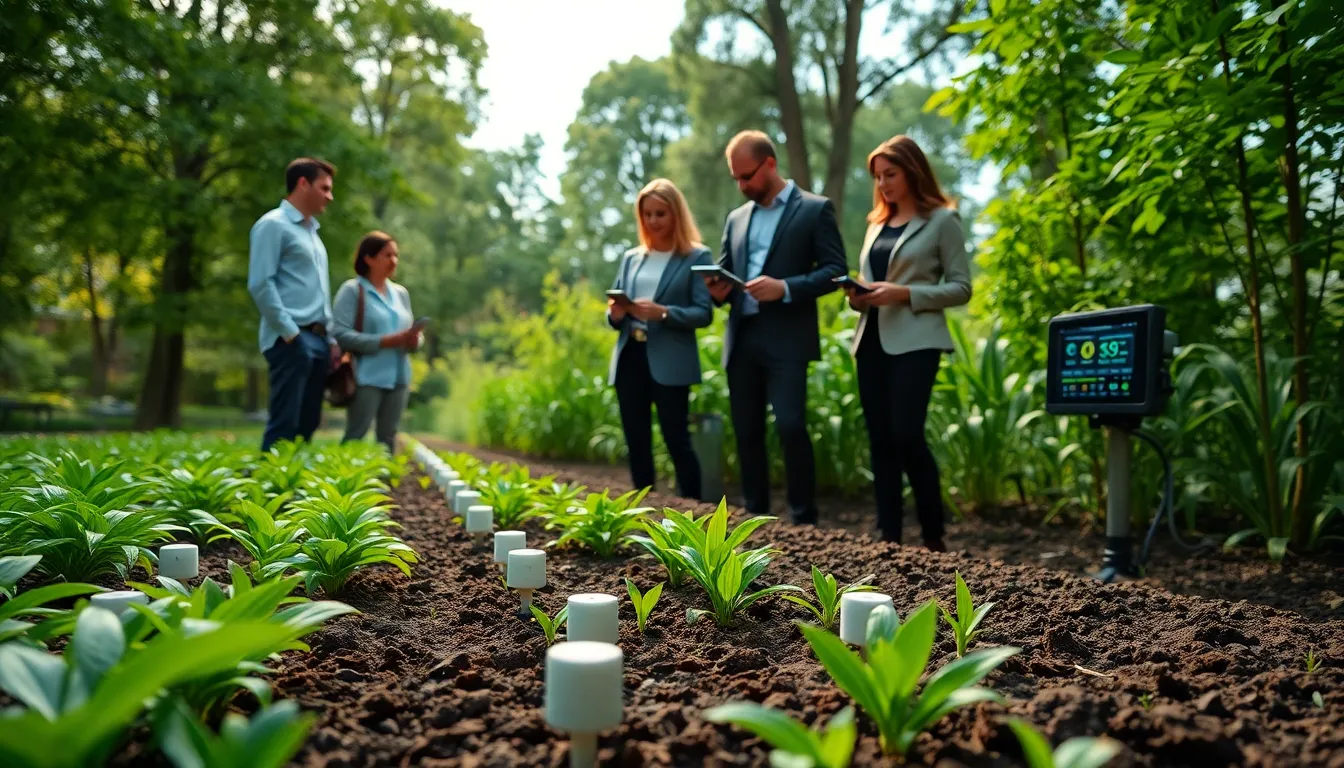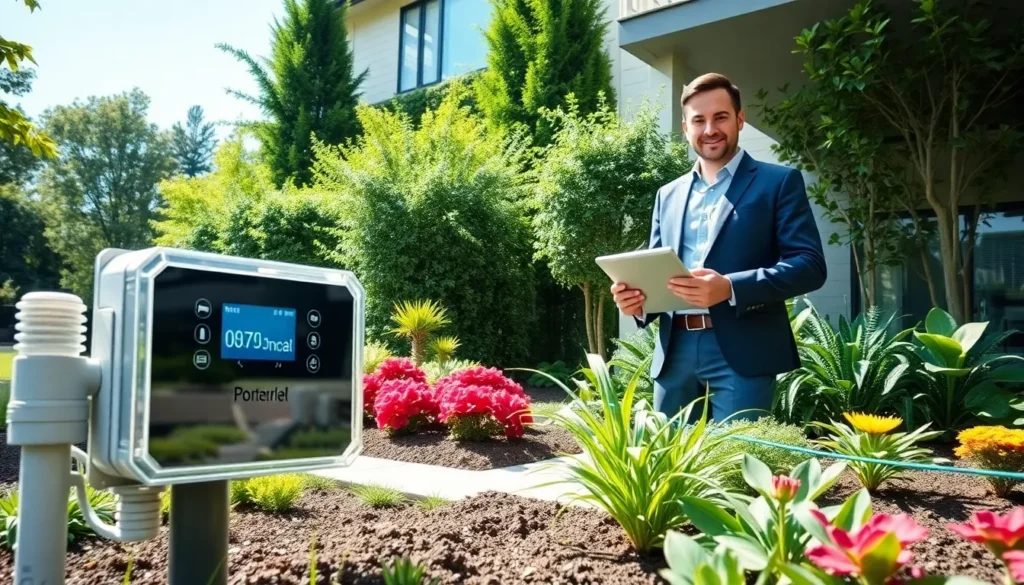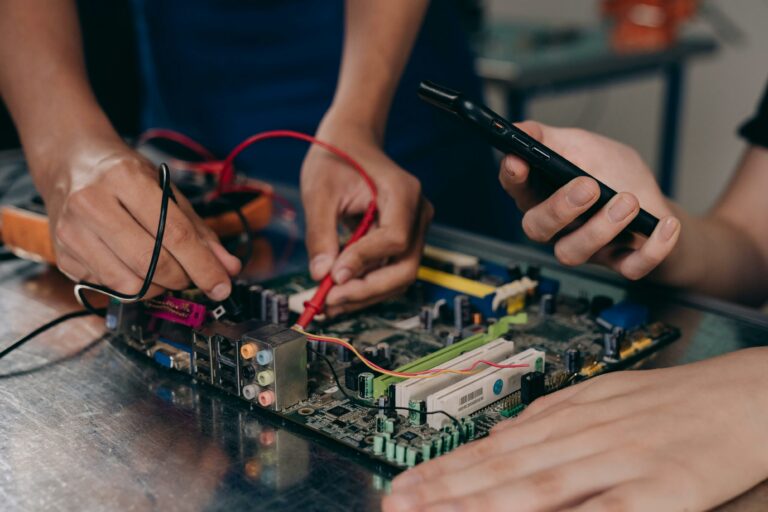Imagine a world where lawns and gardens thrive while conserving every drop of water. With smart irrigation technology, that world is not just a dream: it’s a reality. Smart irrigation systems work like a well-trained puppy, efficient, responsive, and ready to adapt. This clever technology is changing the way we manage our water resources, making it easier than ever to keep our gardens luscious without drowning them in water. If you’ve ever had a plant with a death wish thanks to overwatering, this article is about to be your lifesaver.
Table of Contents
ToggleUnderstanding Smart Irrigation Technology

Smart irrigation technology takes traditional watering methods and gives them a high-tech makeover. Picture this: sensors placed throughout the landscape monitor soil moisture levels, weather conditions, and even evaporation rates. By gathering this data, the system can determine precisely when and how much water the plants need. This means no more guessing games or dependency on outdated timers. Instead, irrigation becomes a data-driven decision, tailored to the specific needs of your garden or farm.
These systems can be controlled remotely through smartphones or computers. So, even if someone’s lounging on the beach, sipping a piña colada, their garden could still be getting the perfect amount of water. Automation and connectivity are at the heart of these systems, showcasing the brilliance of modern technology in resource management.
Benefits of Smart Irrigation Systems
Smart irrigation systems offer a multitude of benefits, but let’s focus on the big hitters:
- Water Conservation: With their precise monitoring and automated controls, these systems can reduce water waste dramatically. It’s like having a conservationist on speed dial, ensuring that no water goes to waste.
- Cost Savings: Fewer resources wasted mean lower water bills. Over time, the initial investment in these systems can pay off significantly.
- Healthier Plants: When plants receive just the right amount of water, they not only survive, they thrive. Healthier plants mean prettier gardens and bountiful harvests.
- Time Efficiency: Say goodbye to manual watering. Smart systems mean less time lugging hoses around and more time enjoying the fruits of one’s labor.
- Environmental Impact: Less water waste contributes to improved ecosystem health. Protecting water resources has never been so easy or rewarding.
Key Components of Smart Irrigation Solutions
Delving deeper into how smart irrigation works reveals its impressive lineup of key components:
- Sensors: These little gadgets gather vital data on soil moisture, temperature, and light. Understanding assets allows the system to make informed watering decisions.
- Controller: This smart brain processes sensor data and determines when and how much to water. Modern controllers can even assess weather forecasts to turn off irrigation on rainy days.
- Sprinklers and Drip Systems: Smart irrigation often uses efficient sprinkler heads or drip lines that direct water exactly where it needs to go, minimizing waste and maximizing absorption.
- Mobile Apps: With a simple tap, users can adjust settings, monitor performance, and analyze historical data right from their phone. Talk about staying in control.
Integrating Smart Irrigation in Real Estate
Real estate and smart irrigation are a match made in environmentally-friendly heaven. Homebuyers are increasingly seeking properties equipped with sustainable technologies. Developers can leverage smart irrigation as a selling point, after all, who wouldn’t want to save money and water?
Integrating these systems can enhance landscaping features as well. Beautiful gardens require water, but with smart systems, they can look stunning without guzzling resources. Besides, properties that use smart irrigation may see an appreciation in value. Eco-conscious consumers are trending towards homes that showcase a commitment to sustainability.
Challenges and Considerations for Implementation
Implementing smart irrigation isn’t entirely smooth sailing. There are challenges to navigate:
- Initial Costs: Although smart irrigation can save money in the long run, the upfront installation costs can be higher than traditional systems. It’s important to outline the return on investment clearly.
- Maintenance: While these systems are designed to be low-maintenance, they still require regular checks and occasional troubleshooting to ensure everything operates smoothly.
- Learning Curve: Familiarizing oneself with the technology might resemble trying to read hieroglyphics for some. Users may need to invest time in understanding how to fully use the system’s capabilities.
- Compatibility with Existing Systems: For those with traditionally installed irrigation systems, integration can pose challenges, requiring careful planning and potential upgrades.
Future Trends in Smart Irrigation
The future of smart irrigation looks vibrant. As technology continues to evolve, we can expect:
- AI Integration: Artificial intelligence will further enhance the efficiency of smart irrigation systems, learning from user behavior and optimizing performance with each passing season.
- Machine Learning: Systems will adapt based on agricultural trends, previous growing seasons, and even climate change predictions. Imagine a garden that learns what it needs.
- Increased Accessibility: As costs decrease and technology becomes more user-friendly, smart irrigation will be available to more homeowners and businesses. This democratization will lead to a larger impact on water conservation.






